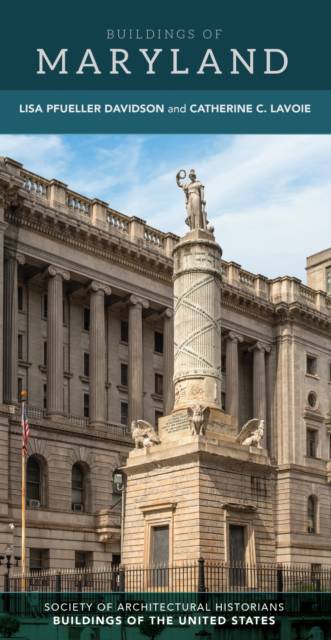
- Afhalen na 1 uur in een winkel met voorraad
- Gratis thuislevering in België
- Ruim aanbod met 7 miljoen producten
- Afhalen na 1 uur in een winkel met voorraad
- Gratis thuislevering in België
- Ruim aanbod met 7 miljoen producten
Omschrijving
Maryland is known as "Little America" and "America in Miniature" for its geographical range, from the vast estuary of the Chesapeake Bay to its Atlantic beaches, farm-rich Piedmont Plateau, and rugged Allegheny Mountains. As one of the thirteen original colonies, it is renowned for eighteenth-century architecture highlighting the transfer of the building traditions of its European settlers. The capital, Annapolis, offers some of colonial America's most iconic buildings, while humbler examples chart the development of regional building types. Baltimore, the state's industrial powerhouse and architectural epicenter from the mid-nineteenth century onward, features a wide range of the row houses that defined the city, as well as commercial, institutional, and industrial buildings created by some of the period's greatest designers. Maryland has likewise been shaped by its innovative transportation networks, Chesapeake culture, mountain resorts, and proximity to the nation's capital.
Buildings of Maryland surveys over 500 representative sites, from tobacco plantations worked by enslaved laborers to free Black communities, from maritime settlements along the Chesapeake to traces of coal mining and railroad development across the mountains, and from row house neighborhoods and streetcar suburbs to well-known modernist planned communities. In this accessible guidebook, readers will encounter a wide range of places--the State House and the Basilica of the Assumption, the Chesapeake Bay Maritime Museum and the Harriet Tubman Underground Railroad Visitor Center, the U.S. Naval Academy and Oriole Park at Camden Yards, Columbia New Town and the Susquehanna Museum, Old Greenbelt and the Clara Barton House, Catoctin Mountain Park and Antietam National Battlefield--that chart the state's history and rich architectural legacy.
Specificaties
Betrokkenen
- Auteur(s):
- Uitgeverij:
Inhoud
- Aantal bladzijden:
- 448
- Taal:
- Engels
- Reeks:
Eigenschappen
- Productcode (EAN):
- 9780813948041
- Verschijningsdatum:
- 27/10/2022
- Uitvoering:
- Hardcover
- Formaat:
- Genaaid
- Afmetingen:
- 130 mm x 249 mm
- Gewicht:
- 748 g

Alleen bij Standaard Boekhandel
Beoordelingen
We publiceren alleen reviews die voldoen aan de voorwaarden voor reviews. Bekijk onze voorwaarden voor reviews.












